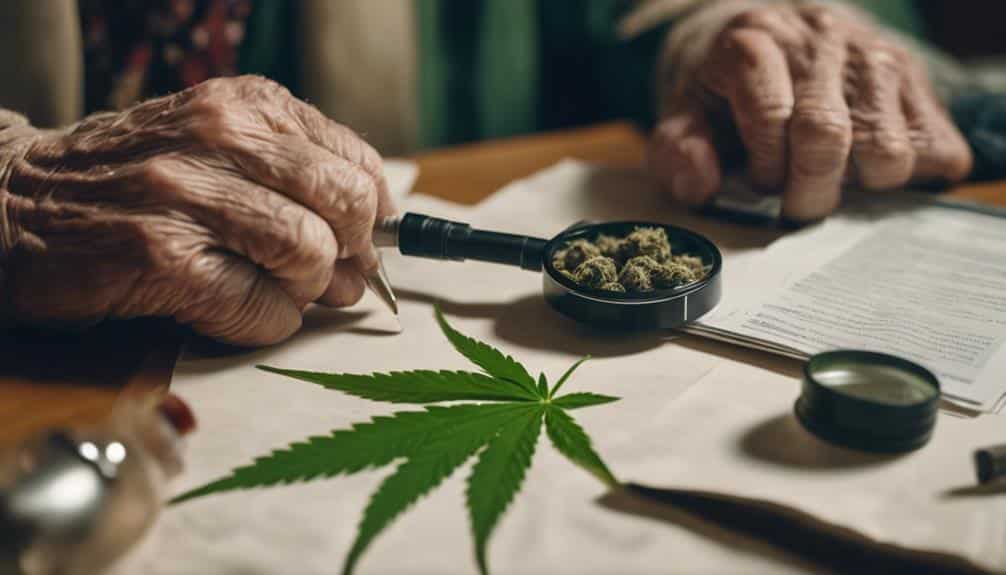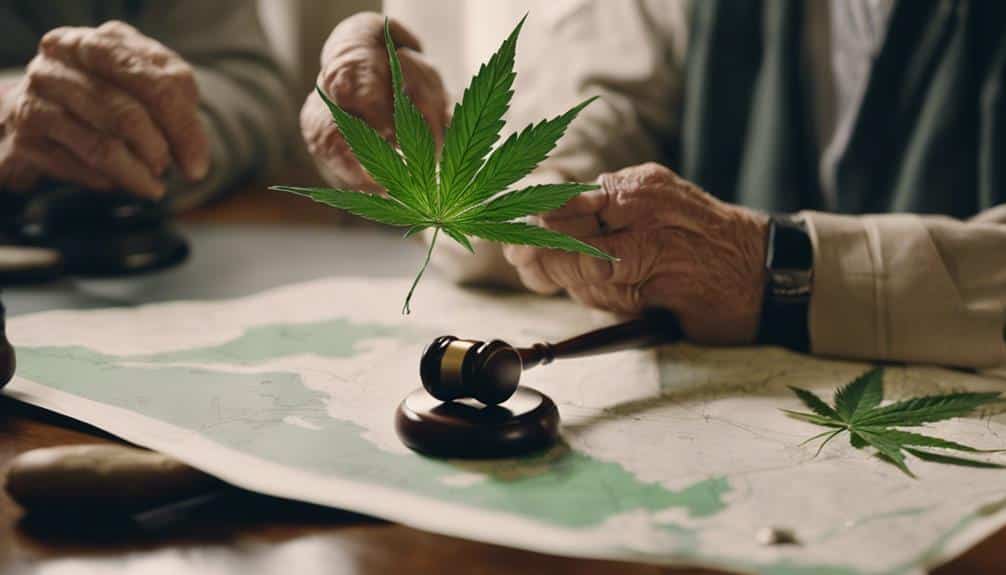Imagine a world where the discomfort of aging doesn’t necessarily mean reaching for the traditional pill bottle. You’re not alone. An increasing number of seniors are turning to medical marijuana for relief.
But what are the actual benefits? And how can you ensure safe use? Let’s explore this alternative solution together, because after all, shouldn’t comfort in our golden years be a right, not a privilege?
Understanding Medical Marijuana

To fully understand the potential benefits and drawbacks of medical marijuana, it’s crucial to comprehend what it is, how it works, and its various uses in the medical field. Medical marijuana refers to using the Cannabis sativa plant or its derivatives to treat symptoms of illness and other conditions. The plant contains more than 100 different chemicals called cannabinoids, each having a different effect on the body.
The two main therapeutic strains are THC (delta-9-tetrahydrocannabinol) and CBD (cannabidiol). THC produces the ‘high’ people feel when they smoke marijuana or eat foods containing it. CBD, on the other hand, doesn’t produce a high and is often used for medicinal purposes. Let’s delve into cannabinoid profiles.
Cannabinoid profiles essentially represent ratios of THC and CBD within a particular strain. Growers can manipulate these profiles to enhance specific therapeutic effects while minimizing others. For example, a strain high in CBD and low in THC might be grown to provide pain relief without the psychoactive effects.
Understanding these profiles and their effects can help you make informed decisions about which strain might be best suited for your needs or those of the people you’re caring for.
Potential Health Benefits
When exploring the potential health benefits of medical marijuana, you’ll find it’s being used to treat a wide range of ailments and symptoms, from chronic pain and epilepsy to multiple sclerosis and cancer-related nausea. The main active compounds in marijuana, known as cannabinoids, have shown a variety of therapeutic properties.
Cannabinoid therapies are increasingly recognized for their potential in managing age-related disorders. For example, marijuana has been found to alleviate distressing symptoms of Alzheimer’s disease such as agitation and lack of appetite. It’s also shown promise in improving sleep quality, a common issue among seniors.
Research also suggests that medical marijuana may slow down the progression of glaucoma, a leading cause of blindness in older adults. Furthermore, it’s been used to increase appetite in patients with HIV/AIDS—a benefit that could extend to seniors who struggle with eating enough.
Despite these potential benefits, it’s critical to approach medical marijuana with a balanced perspective. While it can offer relief for numerous health issues, it isn’t a cure-all. Always consult with a healthcare professional before starting any new treatment regimen. Remember—the goal is enhancing quality of life without introducing unnecessary risks.
Safe Usage Guidelines

When considering medical marijuana as a treatment option, it’s crucial to adhere to safe usage guidelines to mitigate potential risks and side effects. Dosage regulation is paramount—it’s not a one-size-fits-all remedy; the right amount varies from person to person. Start with a small dosage and monitor your body’s response. Gradually increase it under your healthcare provider’s guidance until you find what works best for you.
Patient education is equally important. You need to understand the implications and the mode of consumption. Smoking or vaping might aggravate respiratory issues, while edibles can pose a risk if overconsumed due to their delayed effect. Thus, you should be aware of the suitable consumption method tailored to your health condition.
In addition, remember that medical marijuana can interact with other medications, leading to unforeseen reactions. Discuss your current medications with your healthcare provider to ensure compatibility.
Lastly, only use medical marijuana procured from reputable sources to avoid contaminated or substandard products. Through responsible use, you can harness the therapeutic potential of medical marijuana while minimizing risks—providing this knowledge empowers us all in ensuring the safety and wellness of our senior loved ones.
Possible Side Effects
As you navigate through the world of medical marijuana, it’s essential that you’re aware of possible side effects—which can range from mild discomforts to more serious symptoms—especially for seniors as certain side effects may be amplified due to existing health conditions or medication interactions.
Cannabis interactions and dosage complications are pertinent subjects worth exploring. Here are some potential side effects:
- Dry mouth or throat
- Dizziness or lightheadedness
- Increased heart rate
- Short-term memory impairment
- Altered coordination or spatial awareness
Remember, individual responses to medical marijuana can vary greatly. Just like any other medication, it’s important to start with a low dosage and gradually increase it under the guidance of a healthcare professional. This method helps mitigate potential dosage complications and allows for a more personalized treatment plan.
Distress can occur if the dosage is too high, or if cannabis interacts adversely with other medications. Hence, it’s crucial that you discuss your current medications and health status with your healthcare provider before initiating any form of cannabis therapy.
Being informed can help you safely harness the therapeutic potential of medical marijuana while minimizing its potential risks.
Legal Considerations and Accessibility

Before embarking on your journey with medical marijuana, it’s crucial to understand the legal considerations and explore accessible options in your region. State regulations vary widely—while some states have legalized medical marijuana, others have not. It’s incumbent upon you to research and understand the legal landscape in your state.
Beyond legality, consider accessibility. In states where medical marijuana is legal, it’s typically sold in state-licensed dispensaries—but the density of these dispensaries can vary widely. For instance, rural regions might have fewer options than urban areas.
A significant hurdle many seniors face is cost—most insurance companies still don’t cover medical marijuana—making it a potentially expensive out-of-pocket expense. However, some states offer cost-reduction programs for qualifying patients, which can help mitigate the financial burden.
Conclusion
In conclusion, navigating the world of medical marijuana can seem like deciphering a foreign language for seniors. However, with its potential health benefits, it could be a valuable tool in your wellness arsenal. Remember to use it safely, be aware of possible side effects, and understand the legal landscape. It’s not a magic bullet—but when used responsibly—it can certainly contribute to a healthier and more comfortable life.
By the way, if you’re interested in learning more about this topic—why not visit Fells Point Cannabis Docs of Maryland? Our friendly team is always eager to help you understand more about the potential benefits and safe use of medical marijuana. So don’t hesitate! Give us a call or drop by—we’re looking forward to meeting you and helping you explore how medical marijuana could enhance your wellness journey.
